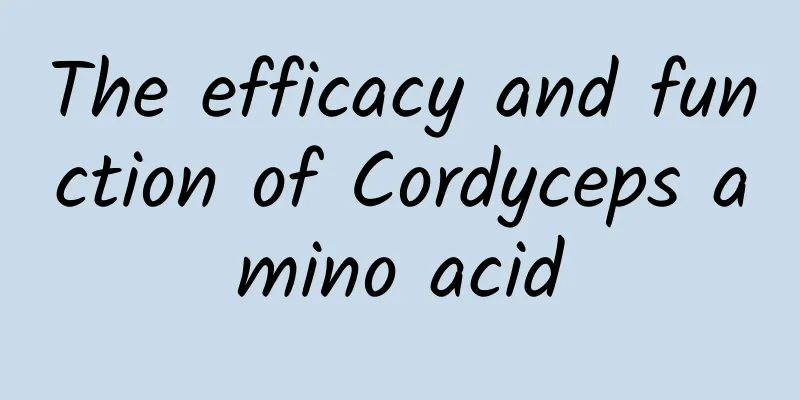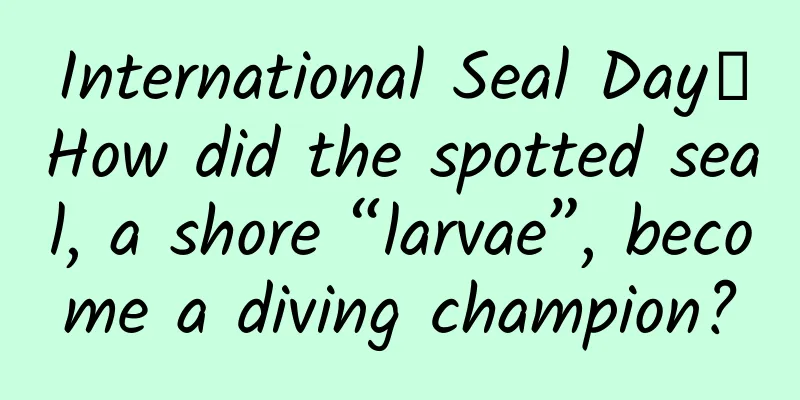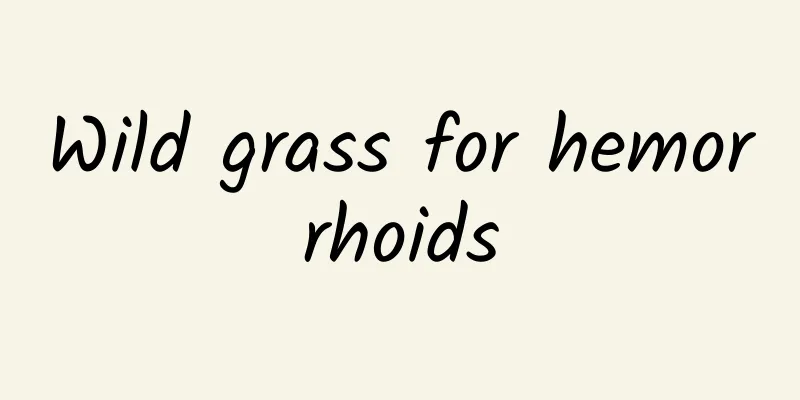This animal was used to treat diseases 300 years ago

|
We all know that most Chinese medicines are plant-based, and there are relatively few animal-based Chinese medicines. Today I will introduce an animal-based Chinese medicine, which is the precious Chinese medicine known as "ginseng in the north and seahorse in the south" - seahorse. The use of seahorse as medicine has a history of at least 1,500 years, and it first appeared in the Tang Dynasty book "Bencao Shiyi". It is warm in nature, sweet in taste, and enters the liver and kidney meridians. It has the effects of nourishing the kidney and strengthening yang, promoting blood circulation and healing injuries. In modern medicine, many fine Chinese medicines based on seahorse are also recognized by patients. It can be seen that with the innovation of scientific research and technology, these expensive and rare authentic medicinal materials are not far from people's daily life. Chinese Medicine Class Seahorse belongs to the class Pisces, family Syngnathidae. Also known as Longluozi, it was called water horse in ancient times. It belongs to the Syngnathidae family of the class Pisces. It is a small fish near land and shallow sea. It is named because its head resembles a horse's head. Its appearance is characterized by "horse head, snake tail, corrugated body". It is a precious Chinese medicine with high economic value. There are five species of seahorses: Clark's seahorse, the spiny seahorse, the seahorse, the three-spotted seahorse, and the small seahorse. They all grow in shallow seas close to the coast with a warm climate. The spiny seahorse is distributed along the coast of Guangdong and Fujian in my country. The dried seahorse is used as medicine. Since it is still relatively difficult to breed seahorses artificially, and the number of wild seahorses is decreasing due to large-scale fishing, their value is also increasing. It is a precious and expensive Chinese medicine. Medication stories The medicine of seahorse originated from Ge Hong's "Baopuzi". In the Qing Dynasty, Chen Shiduo's "New Edition of Materia Medica" said that "seahorse is a medicine that enters the kidney meridian and is good at invigorating yang. Its effect is no less than that of sea dog (referring to sea dog kidney, i.e. the umbilicus)", which shows its strong kidney-tonifying properties. According to legend, in his later years, Emperor Xuanzong of Tang, Li Longji, drank seahorse wine every day to delay aging and maintain youthful vitality. The pill you are taking was used to nourish the kidney and regulate qi 300 years ago. Seahorse is warm in nature and flavor, and enters the liver and kidney meridians. In addition to boosting yang, it can also replenish essence and marrow, replenish qi and blood, and "regulate qi and activate blood circulation." Liu Wentai of the Ming Dynasty recorded in "Essentials of Materia Medica": "Seahorse regulates qi and blood," which is indeed the meaning. Therefore, seahorse as a medicine can actually replenish the yin and yang in the kidney, nourish the qi and blood, and can also "regulate qi and blood". It not only "replenishes without stagnation", but can also treat "long-term deficiency of qi and blood stasis". When it comes to male impotence, Chinese medicine often uses "tonifying the kidney" as the only treatment method. Traditional Chinese Medicine Heritage The Seahorse Kidney-Nourishing Pills originated from the Tongrentang Pharmacy published by the Le family shop in the 45th year of Emperor Kangxi’s reign (1706). Haima Bu Shen Pills are made from 36 kinds of rare and precious medicinal materials from land, sea and air, including the finest seahorse, leopard bone, fresh sparrow meat, ginseng, deer antler and deer tendon, and are processed using 301 traditional and unique processing techniques. It is the only tonic medicine that can nourish kidney yin, assist kidney yang, replenish kidney qi, nourish kidney blood and benefit kidney essence, and can "replenish all five deficiencies". The pill you are taking was used to nourish the kidney and regulate qi 300 years ago. Chinese medicine explains Regarding the treatment of kidney deficiency, traditional Chinese medicine follows the principle of "replenishing the deficiency". In the Qing Dynasty, with the development of medicine, doctors gradually realized the mutual dependence, mutual use, mutual generation and mutual transformation between yin, yang, qi, blood and essence. After continuous practice, they found that the comprehensive (yin, yang, qi, blood, essence) kidney-tonifying method for treating kidney deficiency is better than simply nourishing yin and assisting yang. Professor Zhang Daning, a master of traditional Chinese medicine, a master of nephrology, and the sixth-generation successor of imperial physicians, said that "Suwen Liujie Pulse Theory" said: "The kidney is the master of hibernation, the basis of storage, and the place of essence." This means that the essence stored in the kidneys includes innate essence and acquired essence. The innate essence is inherited from parents. It is the original substance that forms life and is innate. The acquired essence refers to the essence of water and grain produced by taking in food. This innate and acquired essence are stored in the kidneys. Seahorse as a medicine has the effect of replenishing the yin and yang in the kidney. It not only nourishes the qi and blood, but also can "regulate qi and blood". Haima Bushen Pills, which have been passed down for more than 300 years, are a masterpiece in the treasure house of traditional Chinese medicine. The prescription of Haima Bu Shen Wan, with seahorse as the leading ingredient, has 36 herbs strictly matched and well-formulated. It is suitable for various weakness symptoms of human body based on kidney deficiency. It can nourish the kidney and assist yang, replenish qi and nourish blood. It can be used for people with various symptoms of human weakness, sallow or pale complexion, fatigue, tinnitus, dizziness, soreness of waist and knees, spontaneous sweating, night sweats, insomnia and forgetfulness, cold hands and feet, low libido in men and women, impotence and spermatorrhea, susceptibility to colds, and premature aging. |
<<: This girl is bitter and smelly but so many people like her
>>: Traditional Chinese medicine says: This medicine is indispensable for men throughout their lives
Recommend
"Health from eating" series | National Nutrition Week: @The elderly around you, this dietary advice is very important
Recently, a review article published in the Briti...
Don’t treat erythromycin ointment as a “national miracle drug”
Whether it is mosquito bites, acne, allergies, or...
Introduction to the effects and edible methods of the traditional Chinese medicine Houttuynia cordata
There is a herb in traditional Chinese medicine c...
My clothes have white spots after washing. What else can I do except buy another one?
In daily life, convenient and easy-to-use laundry...
Mom, wearing thermal underwear or not has nothing to do with chronic cold legs!
“There is a kind of cold that makes your mother t...
The efficacy and function of Qingjiangteng
Everyone is familiar with Qingjiang teng. Qingjia...
The efficacy and function of yellow skirt bamboo fungus
Yellow-skirted bamboo fungus is a traditional Chi...
What are the hazards of applying Chinese medicine on the face
Traditional Chinese medicine is very popular nowa...
Don’t eat! Don’t eat! Don’t eat! Official important reminder
Important reminder! Delicious looking wild mushro...
The effect of monk fruit cough syrup
Luo Han Guo cough syrup is becoming more and more...
The efficacy, effects and eating methods of Artemisia selengensis
Artemisia selengensis is a green woody plant. It ...
E-commerce data: Juhuasuan weekly data (10.15-10.21)
The following picture is from Juhuasuan, which su...
What changes will occur in the body within 72 hours after alcohol enters the body?
Experts in this article: Wang Hao, Master's s...
Off-season marketing: how do birds wearing “down jackets” survive the summer?
With the arrival of hot summer, the heavy winter ...
What are the effects and contraindications of Cordyceps
Eating more Cordyceps can effectively help us imp...









